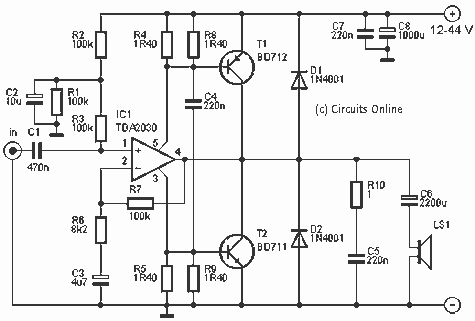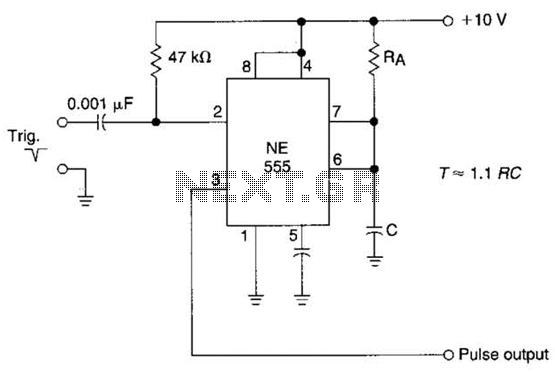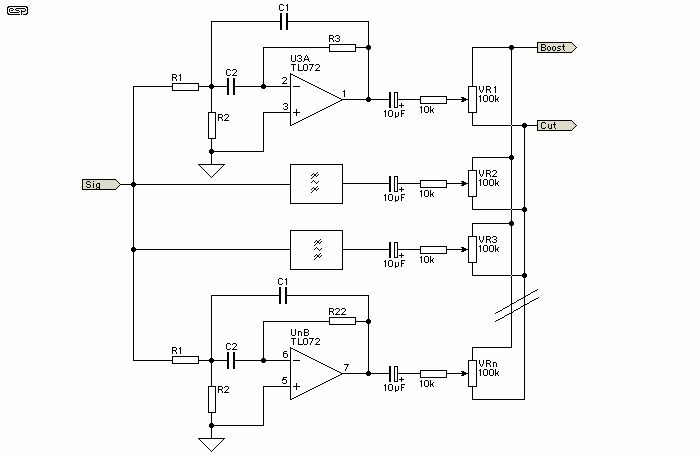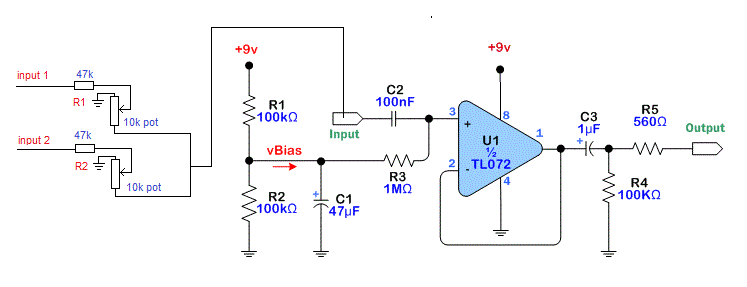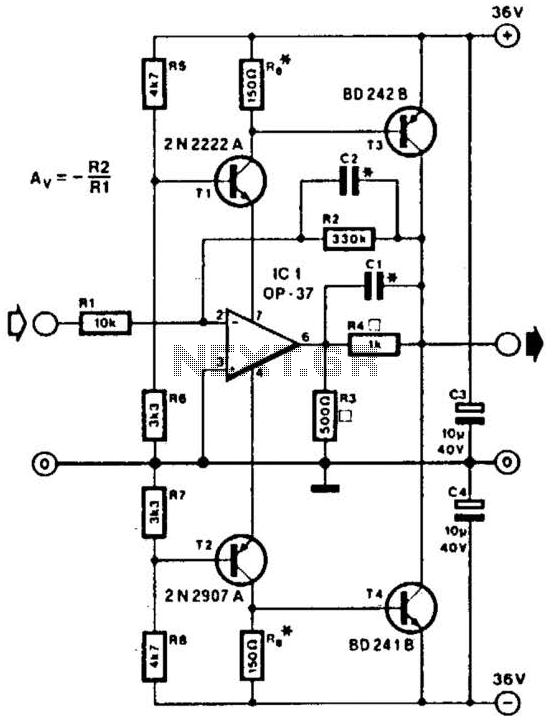
DSP Mixed Signal Solutions for Multi Channel Audio
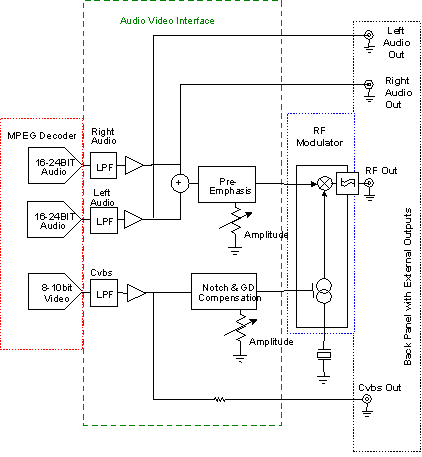
The limitation of this architecture is that it overlooks the variations among different channels. Initially, the subwoofer channel has a limited bandwidth, and its signal is often produced in real-time by summing the low-frequency components from the full-bandwidth channels. Additionally, when a stereo source is played through a multi-channel system, only the front left (FL) and front right (FR) signals are supplied by the source; all other channels are derived from these two in a process known as multi-channel expansion. The reverse process, known as down mixing, is utilized when a multi-channel signal is recorded onto a stereo medium. Implementing these mixing and filtering requirements is challenging with traditional stereo components, where individual channels operate independently. One potential solution is to develop a system-on-chip that integrates all functions onto a single chip, requiring only passive external components. While this is feasible with contemporary mixed-signal CMOS technologies, it does not always provide the highest performance or most cost-effective solution. In analog circuitry, the optimal balance between performance, die size, power dissipation, and cost is typically achieved with larger process geometries than those ideal for digital circuit blocks. Consequently, system architects face a challenging decision between conflicting requirements. Utilizing a more advanced fabrication process necessitates lower supply voltages, which reduces the voltage swing available for analog components, thereby degrading their signal-to-noise ratio (SNR). Furthermore, the characterization of new processes is often incomplete, complicating the execution of accurate simulations essential for optimizing analog circuit performance. Conversely, employing an older process with larger transistors unnecessarily increases the size and power dissipation of digital circuit blocks. An alternative approach is to separate the system into a mixed-signal device and a digital signal processor (DSP). This method allows for the optimization of each component independently, facilitating the achievement of demanding performance targets. Additionally, DSP manufacturers frequently provide a comprehensive code library of algorithms and programming tools, simplifying the deployment and customization of signal-processing functions for system designers. This enables mixed-signal vendors to focus on their core expertise and offer a "just add DSP" solution. Such integrated circuits (ICs) typically incorporate multiple DACs and ADCs (digital-to-analog and analog-to-digital converters) along with analog mixing and interfacing functions. Audio playback in a multi-channel system necessitates volume and tone control, as well as bass management, which involves redirecting low frequencies to the subwoofer. Providing these functionalities for both analog and digital source signals can be challenging when audio performance is a priority. In a digital implementation, any analog signals must first be digitized, processed, and then converted back to analog.
In the context of audio processing systems, the architecture described presents significant challenges and considerations for design engineers. The subwoofer channel's bandwidth limitation necessitates careful signal processing to ensure that low-frequency components are accurately represented. This is particularly critical in multi-channel audio systems, where the integrity of the sound experience is paramount. The multi-channel expansion process, which synthesizes additional channels from the primary left and right signals, requires sophisticated algorithms that can effectively manage phase and timing to avoid degradation of audio quality.
To address the difficulties associated with traditional stereo components, a system-on-chip (SoC) design is advantageous. By integrating the necessary analog and digital functions into a single chip, the system can achieve a compact form factor and reduce the complexity of external circuitry. However, the trade-offs associated with process technology must be carefully evaluated. The choice of fabrication process directly impacts the performance metrics such as SNR, power consumption, and overall efficiency of the system.
The separation of mixed-signal and digital processing functions into distinct components offers a flexible solution. By utilizing a DSP, designers can leverage a vast array of pre-existing algorithms tailored for audio processing, thereby accelerating development time and enhancing system capabilities. The DSP can handle complex tasks such as equalization, dynamic range compression, and spatial audio processing, while the mixed-signal IC focuses on high-fidelity audio conversion and signal integrity.
In practical applications, the integration of multiple DACs and ADCs within the mixed-signal IC allows for seamless transition between analog and digital domains. This is particularly essential in multi-channel audio systems where precise volume control and tone adjustment are required. Additionally, implementing effective bass management ensures that low-frequency signals are appropriately routed to the subwoofer, enhancing the overall listening experience.
Overall, the design of audio processing systems must balance the need for high performance with the constraints of cost and power efficiency. The collaborative approach of combining mixed-signal devices with DSPs provides a pathway to achieve superior audio quality while maintaining flexibility in design and implementation.The drawback of this architecture is that it disregards the differences between the various channels. First, the subwoofer channel has a reduced bandwidth and its signal is often generated in real time by summing the low-frequency components of the full-bandwidth channels.
Second, when a stereo source is played through a multi-channel system, only the front left (FL) and front right (FR) signals are provided by the source; all remaining channels are generated from these two in a process known as multi-channel expansion. The reverse process is known as down mixing and is used when a multi-channel signal is recorded onto a stereo medium.
These mixing and filtering requirements are difficult to implement using traditional stereo components, where the individual channels are mutually independent. One approach is to aim for a system-on-chip solution that integrates all functions on a single chip, requiring only passive external components.
While this is perfectly feasible using today`s mixed-signal CMOS technologies, it does not always yield the highest-performing or most cost-effective solution. For analog circuitry, the ideal trade-off between performance, die size, power dissipation and cost is invariably obtained with larger process geometries than those best suited to digital-circuit blocks.
As a result, system architects are faced with a difficult choice between conflicting requirements. Using a more advanced fabrication process means that lower supply voltages must be used. This reduces the voltage swing available for analog elements, worsening their signal-to-noise ratio (SNR). Moreover, the characterization of new processes is often incomplete, making it difficult to run the accurate simulations necessary to optimize the performance of analog circuits.
Conversely, using an older process with larger transistors needlessly increases the size and power dissipation of digital circuit blocks. An alternative proposition is to partition the system into a mixed-signal device and a digital signal processor (DSP).
This approach makes it possible to optimize each component separately, so that demanding performance targets can be met more easily. Moreover, DSP vendors often provide an extensive code base of algorithms as well as programming tools, making it easier for system designers to deploy and customize signal-processing functions.
This leaves mixed-signal vendors free to concentrate on their core competency and offer a "just add DSP" solution. Such ICs typically include a number of DACs and ADCs (digital-to-analog / analog-to-digital converters) as well as analog mixing and interfacing functions.
Audio playback in a multi-channel system requires volume and tone control, as well as bass management " the process of redirecting low frequencies to the subwoofer. Providing these functions for both analog and digital source signals can be difficult where audio performance is important.
In a digital implementation, any analog signals must first be digitized, then processed and finally converted to the analog d 🔗 External reference
In the context of audio processing systems, the architecture described presents significant challenges and considerations for design engineers. The subwoofer channel's bandwidth limitation necessitates careful signal processing to ensure that low-frequency components are accurately represented. This is particularly critical in multi-channel audio systems, where the integrity of the sound experience is paramount. The multi-channel expansion process, which synthesizes additional channels from the primary left and right signals, requires sophisticated algorithms that can effectively manage phase and timing to avoid degradation of audio quality.
To address the difficulties associated with traditional stereo components, a system-on-chip (SoC) design is advantageous. By integrating the necessary analog and digital functions into a single chip, the system can achieve a compact form factor and reduce the complexity of external circuitry. However, the trade-offs associated with process technology must be carefully evaluated. The choice of fabrication process directly impacts the performance metrics such as SNR, power consumption, and overall efficiency of the system.
The separation of mixed-signal and digital processing functions into distinct components offers a flexible solution. By utilizing a DSP, designers can leverage a vast array of pre-existing algorithms tailored for audio processing, thereby accelerating development time and enhancing system capabilities. The DSP can handle complex tasks such as equalization, dynamic range compression, and spatial audio processing, while the mixed-signal IC focuses on high-fidelity audio conversion and signal integrity.
In practical applications, the integration of multiple DACs and ADCs within the mixed-signal IC allows for seamless transition between analog and digital domains. This is particularly essential in multi-channel audio systems where precise volume control and tone adjustment are required. Additionally, implementing effective bass management ensures that low-frequency signals are appropriately routed to the subwoofer, enhancing the overall listening experience.
Overall, the design of audio processing systems must balance the need for high performance with the constraints of cost and power efficiency. The collaborative approach of combining mixed-signal devices with DSPs provides a pathway to achieve superior audio quality while maintaining flexibility in design and implementation.The drawback of this architecture is that it disregards the differences between the various channels. First, the subwoofer channel has a reduced bandwidth and its signal is often generated in real time by summing the low-frequency components of the full-bandwidth channels.
Second, when a stereo source is played through a multi-channel system, only the front left (FL) and front right (FR) signals are provided by the source; all remaining channels are generated from these two in a process known as multi-channel expansion. The reverse process is known as down mixing and is used when a multi-channel signal is recorded onto a stereo medium.
These mixing and filtering requirements are difficult to implement using traditional stereo components, where the individual channels are mutually independent. One approach is to aim for a system-on-chip solution that integrates all functions on a single chip, requiring only passive external components.
While this is perfectly feasible using today`s mixed-signal CMOS technologies, it does not always yield the highest-performing or most cost-effective solution. For analog circuitry, the ideal trade-off between performance, die size, power dissipation and cost is invariably obtained with larger process geometries than those best suited to digital-circuit blocks.
As a result, system architects are faced with a difficult choice between conflicting requirements. Using a more advanced fabrication process means that lower supply voltages must be used. This reduces the voltage swing available for analog elements, worsening their signal-to-noise ratio (SNR). Moreover, the characterization of new processes is often incomplete, making it difficult to run the accurate simulations necessary to optimize the performance of analog circuits.
Conversely, using an older process with larger transistors needlessly increases the size and power dissipation of digital circuit blocks. An alternative proposition is to partition the system into a mixed-signal device and a digital signal processor (DSP).
This approach makes it possible to optimize each component separately, so that demanding performance targets can be met more easily. Moreover, DSP vendors often provide an extensive code base of algorithms as well as programming tools, making it easier for system designers to deploy and customize signal-processing functions.
This leaves mixed-signal vendors free to concentrate on their core competency and offer a "just add DSP" solution. Such ICs typically include a number of DACs and ADCs (digital-to-analog / analog-to-digital converters) as well as analog mixing and interfacing functions.
Audio playback in a multi-channel system requires volume and tone control, as well as bass management " the process of redirecting low frequencies to the subwoofer. Providing these functions for both analog and digital source signals can be difficult where audio performance is important.
In a digital implementation, any analog signals must first be digitized, then processed and finally converted to the analog d 🔗 External reference

